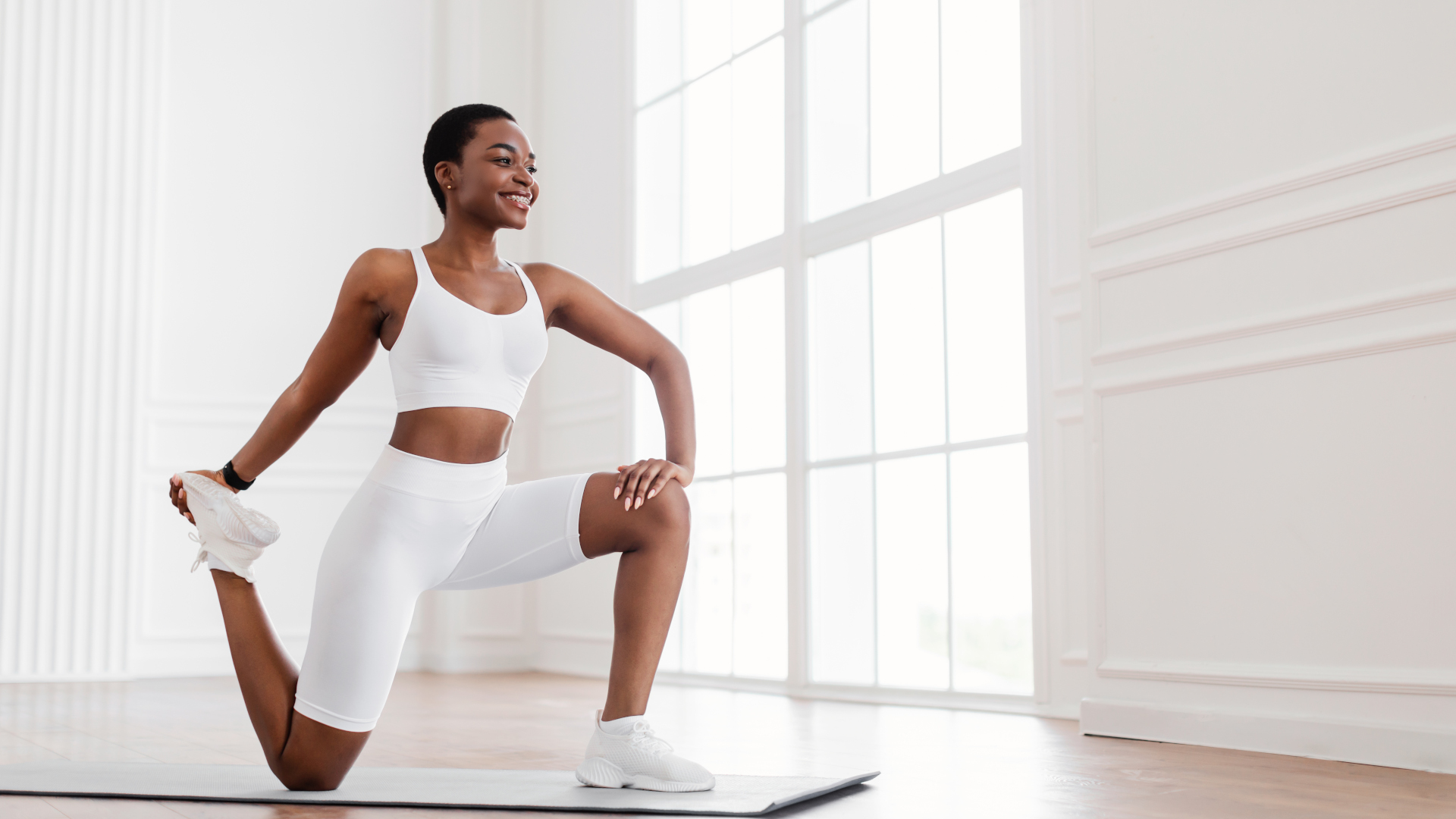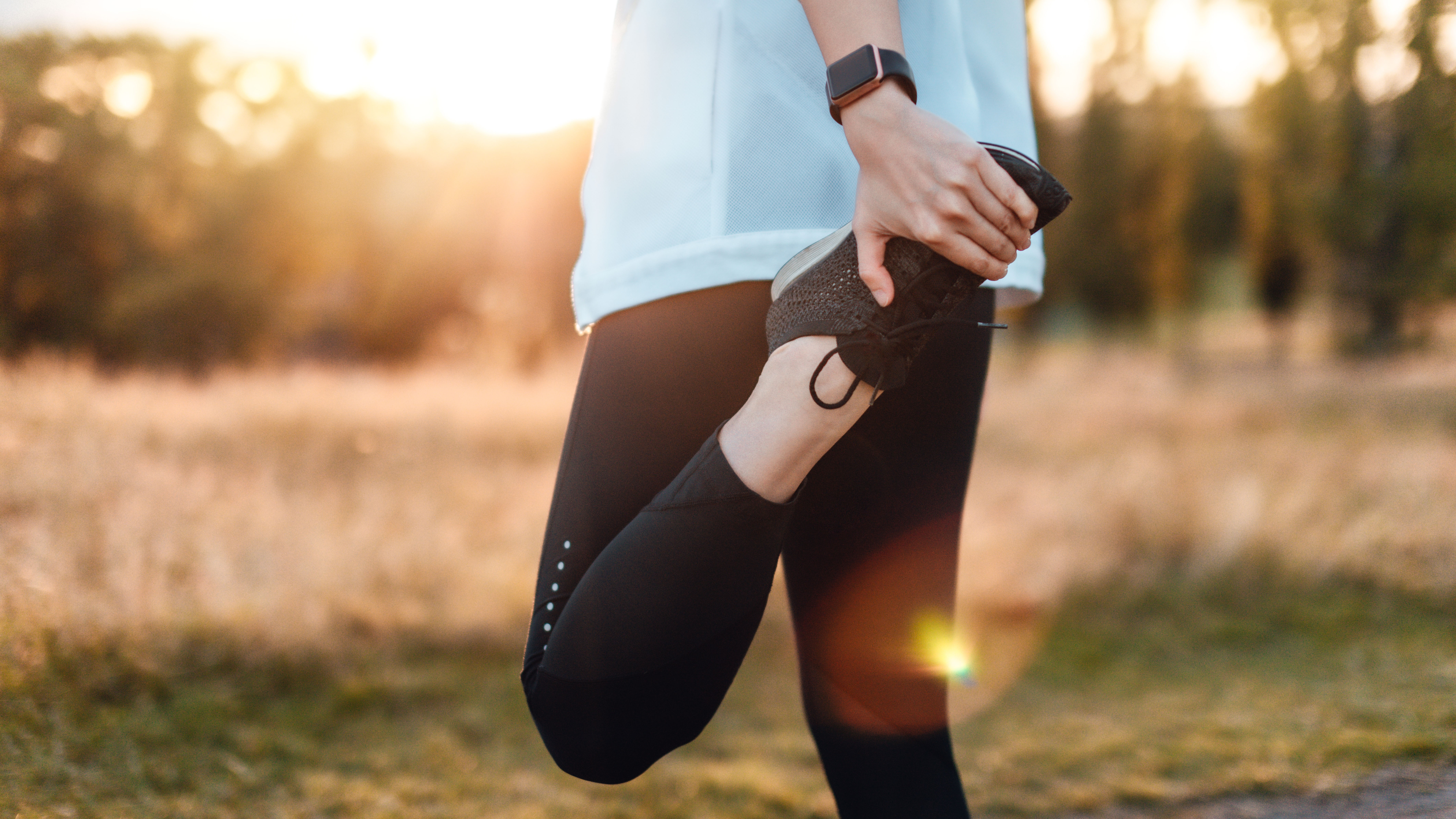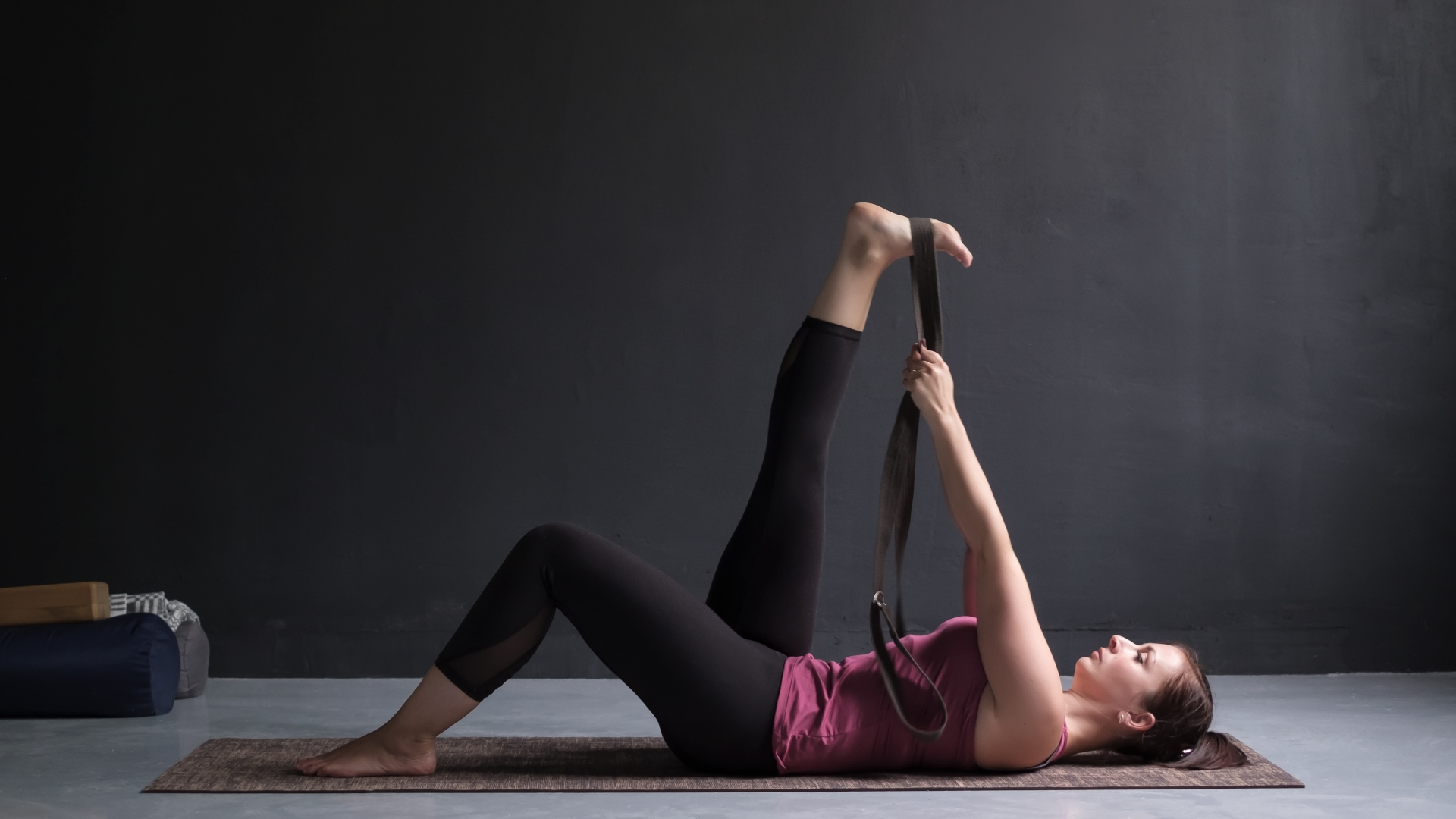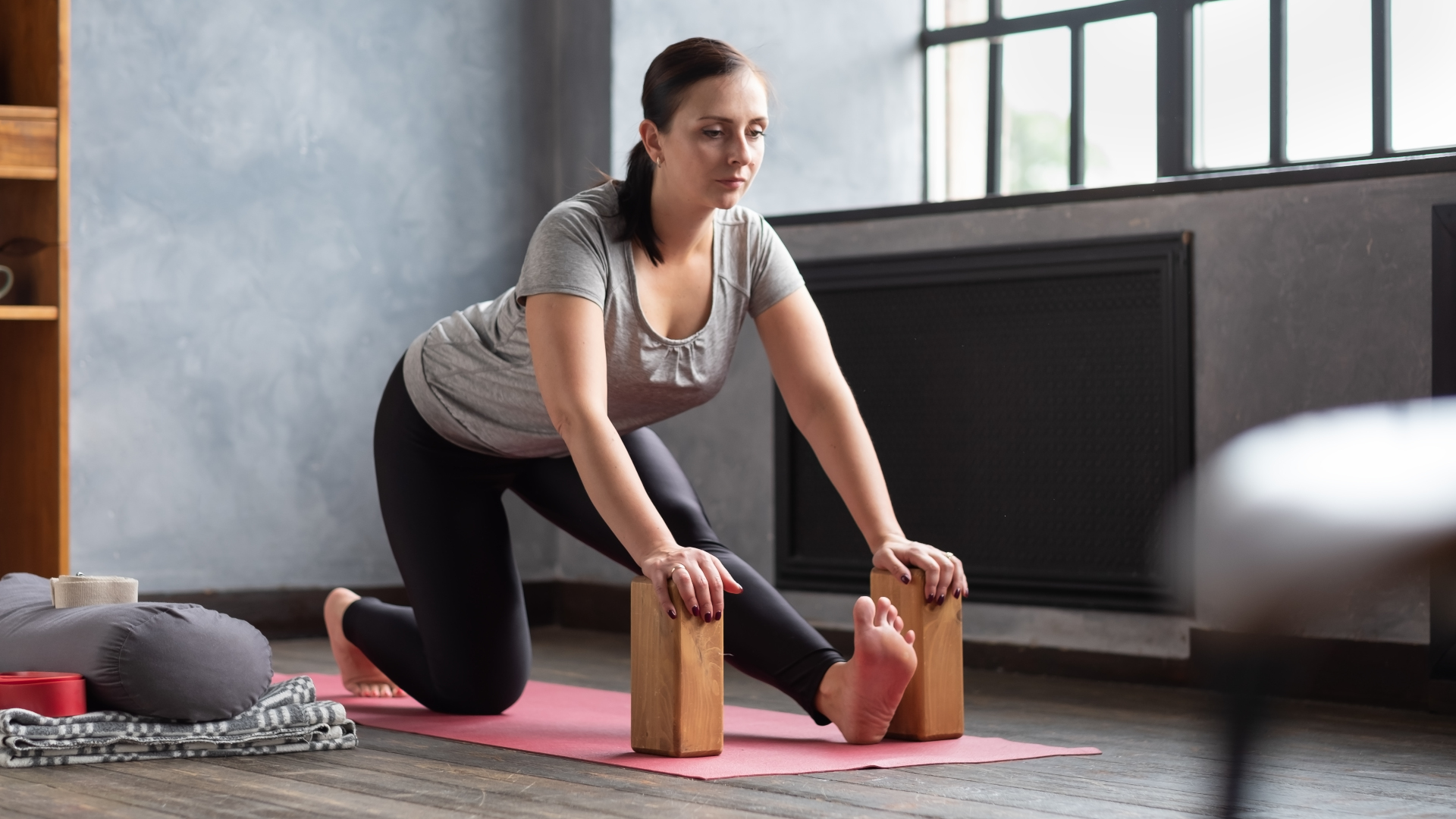What is isometric stretching?
We look at the benefits of isometric stretching, and how to do it to improve your range of motion

If you’re a runner or a hiker, chances are you at least think about stretching when you get home from a long day on the trail, and you can probably feel in your body what needs stretched – but did you know that there are different ways to go about stretching that may produce different results?
I’ve been teaching yoga for 15 years so stretching is a practice I swear by, even if scientists don’t yet totally understand how it works. Whether it’s the 15-minute interlude between kicking my trail running shoes off and getting on the couch, or an hour long session on my rest days, I really rely on it to keep me pain-free and moving functionally, but a few years ago, I changed my approach to it when I discovered isometric stretching.

What is isometric stretching?
You can roughly divide all types of stretching into two broad categories: dynamic and static. Dynamic stretching involves motion, for example swinging your leg forward and backward, and static stretches don’t (these ones look like what we all generally associate with stretching). The theory is that dynamic stretches improve your mobility in motion, whereas static stretches improve your mobility in a static position, though this may translate into greater mobility in motion, too.
Isometric stretching is a type of static stretching. In an isometric stretch, you add tension to the muscles by contracting them while they are being stretched.
The best way to understand it is to try it. Grab a yoga strap or a scarf and lie down on your back, wrapping the strap around your right foot. Extend your right leg straight up in the air, holding the strap in both hands, and extend your left leg straight out on the floor. Now what you’d probably normally do here is relax your right hamstrings and use your arms to create the stretch – if so, that is termed passive stretching. To make this stretch an isometric stretch, contract your hamstrings like you’re trying to bend your knee (but don’t) and press your leg away from you while resisting it with your arms. Now it’s an isometric stretch.

What are the benefits of isometric stretching?
It's important to note here that there hasn't been a lot of useful research on stretching, but isometric stretching adds resistance, so in addition to temporarily lengthening the muscle fibers, it strengthens your muscles within a range of motion that’s probably outside of your typical daily movements, and at least in practice, I’ve found that it can often produce noticeable results to mobility quite quickly. One exercise I use to show this is to have someone lie down and perform the stretch I described above passively, so we can see what their range of motion in their hamstrings and hips is.
Next, I’ll take over from the yoga strap and place my hand against their calf, instructing them to press their leg against me while I resist their efforts. We’ll hold this for 15 seconds, and when I release, they can unusually find a lot more range of motion in their leg and hip.
Advnture Newsletter
All the latest inspiration, tips and guides to help you plan your next Advnture!
Passive stretching isn’t always recommended for athletes who require explosive movement, like sprinters and basketball players, because it may actually hinder their performance. A 2021 review of studies on the topic found that passive stretching before running demonstrates a negative effect on sprint performance and jump height, which is why we’ve shifted away from doing it before running. It was, however, found to decrease injury risk, so it may hold value after a race or during your off season, and it has no effect on running economy.
On the other hand, isometric holds before running demonstrate no significant effect on sprint performance or jump height, and lead to decreases in soreness levels, so if you’re actively in training, or wanting to stretch before you run or workout, isometric stretching seems to be better, whereas passive stretching may be beneficial after a workout.

How to do isometric stretching
You can do many of your existing stretches isometrically simply by contracting the muscles you’re lengthening to create your own resistance. For example, if you’re reaching back to hold your foot for a simple quad stretch, you can resist your own efforts by kicking your foot back into your hand while you pull it towards you. Another of my favorites is in the yoga pose half splits, pictured above, when you can press your heel into the ground and engage your hamstrings as though you were trying to drag your foot back towards you.
However, it’s good to follow these simple steps:
- Begin the stretch passively, holding it for a few seconds without resistance.
- After a few seconds, contract the extended (antagonist) muscles and hold for 15 seconds.
- Release the contraction and finish with a few more seconds of passive stretching.
- Repeat one or two more times.
Note that isometric stretching is not recommended for children and adolescents whose bones are still growing and it is always suggested to work with a trainer or physical therapist before beginning a new regime.
Julia Clarke is a staff writer for Advnture.com and the author of the book Restorative Yoga for Beginners. She loves to explore mountains on foot, bike, skis and belay and then recover on the the yoga mat. Julia graduated with a degree in journalism in 2004 and spent eight years working as a radio presenter in Kansas City, Vermont, Boston and New York City before discovering the joys of the Rocky Mountains. She then detoured west to Colorado and enjoyed 11 years teaching yoga in Vail before returning to her hometown of Glasgow, Scotland in 2020 to focus on family and writing.

